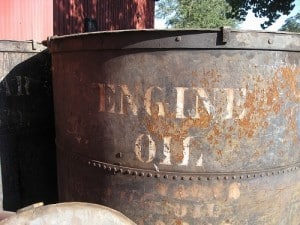One of the most common types of chemical spills in the workplace is oil. It’s used in everything from forklifts and trucks to the industrial machines and lifting equipment. Although it’s considered low toxicity, oil spills in the workplace pose a direct threat to the safety of employees on duty. Companies must take a proactive approach towards cleaning up any spilled oil in a timely manner to ensure the safety of everyone on the premises.
Why Oil Spills In The Workplace Are Dangerous:
- Increases the chance of slip-and-fall accidents.
- Oil is highly flammable and may catch fire from a spark or source of heat.
- Can lead to the production of gases.
The Occupational Safety and Health Administration (OSHA) states the following in regards to cleaning up oil spills in the workplace:
“Oil spill cleanup workers can face potential hazards from oil byproducts, dispersants, detergents and degreasers. Drowning, heat illness and falls also pose hazards, as can encounters with insects, snakes and other wild species native to the impacted areas.”
While the example described above is a larger oil spill, companies should still follow certain precautionary measures when cleaning up oil spills. The golden rule when cleaning up an oil spill — or any chemical for that matter — is to protect yourself. Use extreme caution when walking around the source of the spill, as it can be incredibly slippery. All it takes is a couple drops of oil on a flat cement or asphalt surface to send a worker slipping and falling to the floor. Wearing a pair of non-slip shoes can help cleanup crews and employees can better traction while working around oil spills.
Use Absorbent Materials
Using absorbent materials, such as pads, mats and socks, is a highly effective way to clean up oil spills in the workplace. Assuming the spill is minor and contained to a particular area within your workplace, you can typically soak it up with the right absorbent materials. Carefully laying down some absorbent pads into the center of the spill will gradually clean the area, at which point you can throw the oil-soaked materials away.
Of course, it’s important to note that oil-soaked rags and materials must be properly disposed in a separate container. Tossing them in your company’s normal trash receptacle may result in them polluting the landfill. You can read more about the correct way to dispose of oil-soaked rags in our previous blog post located here.
